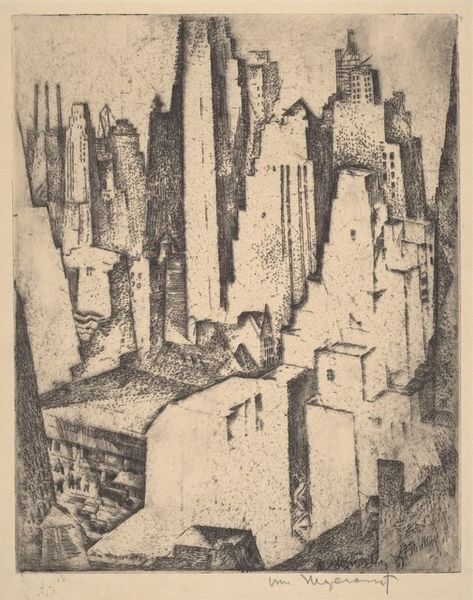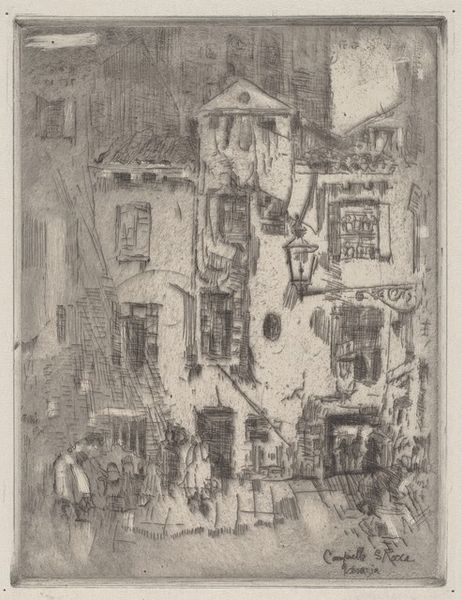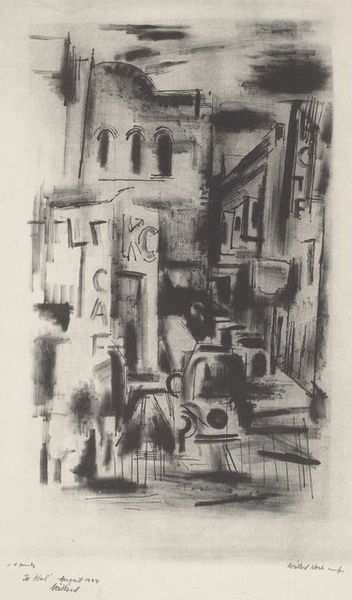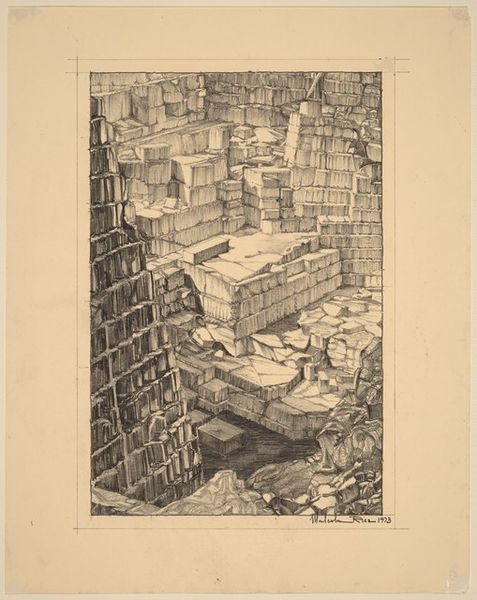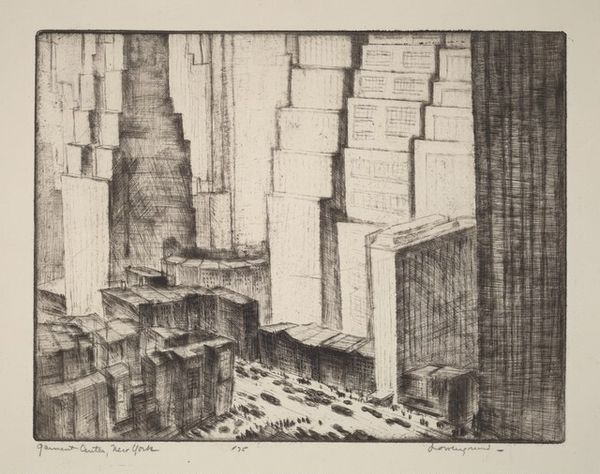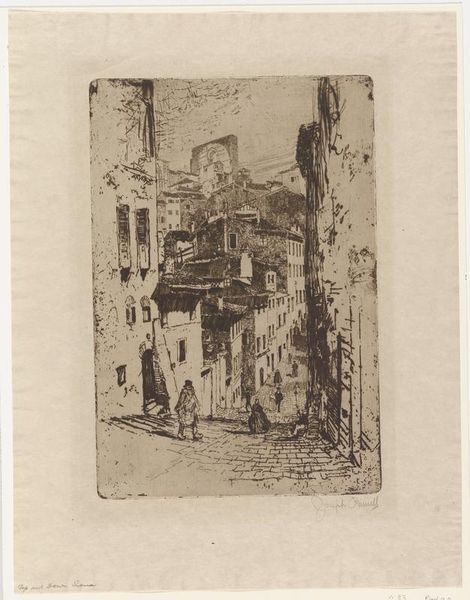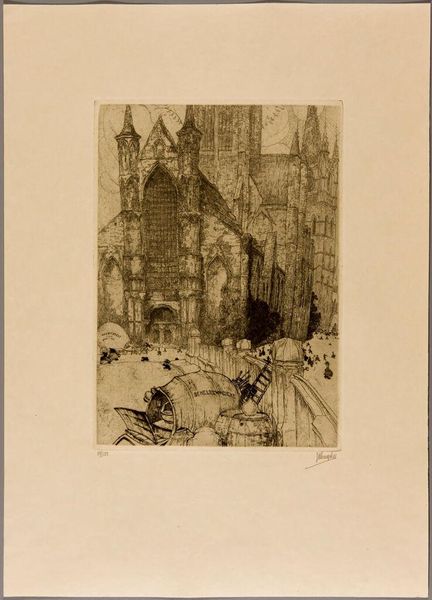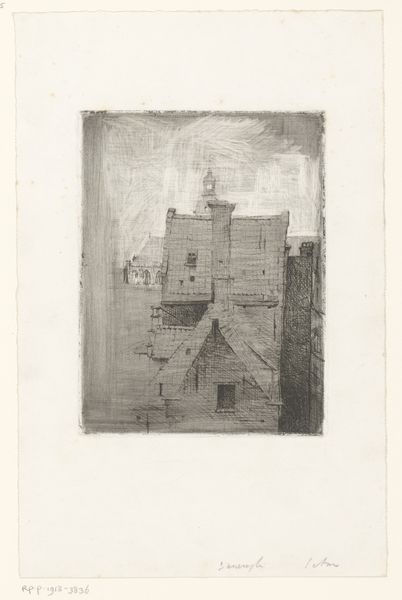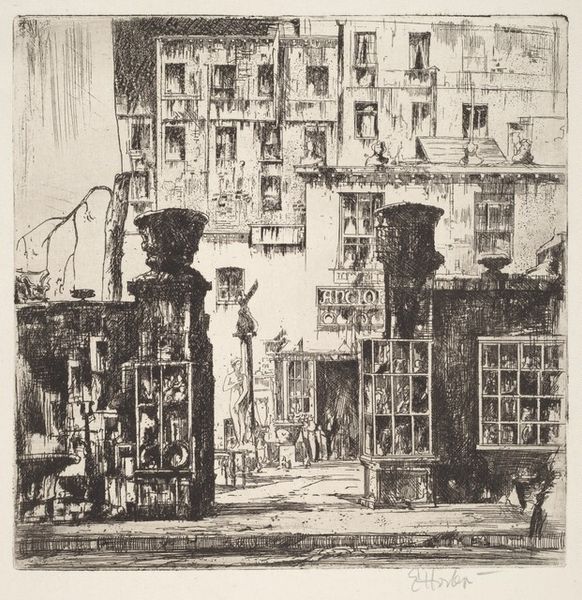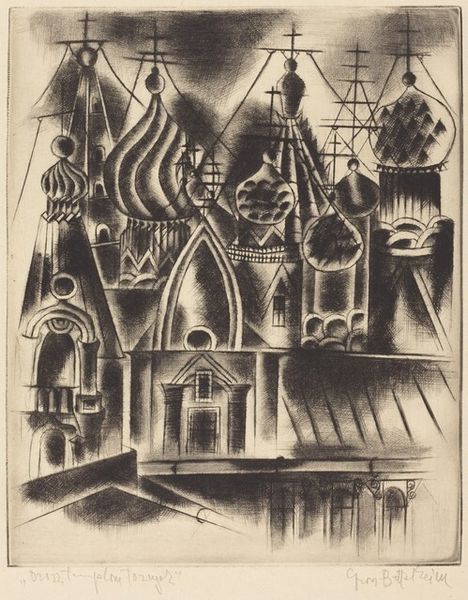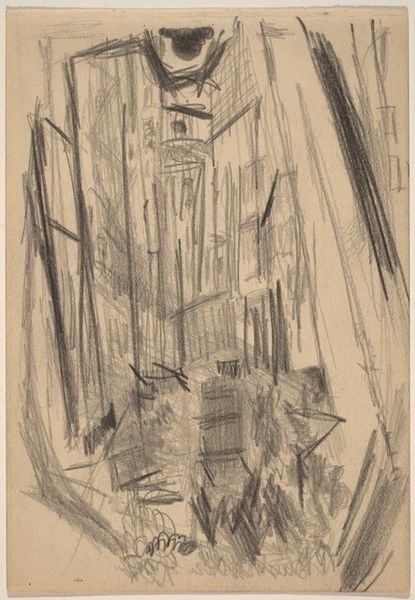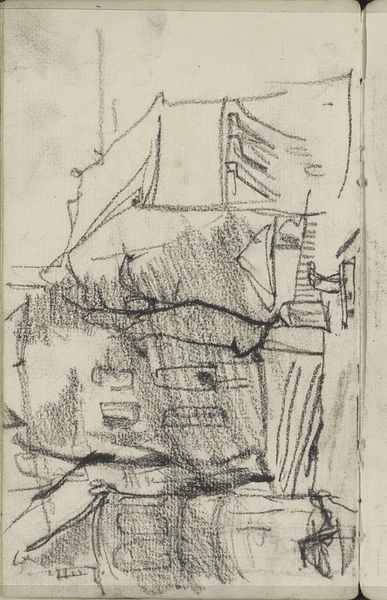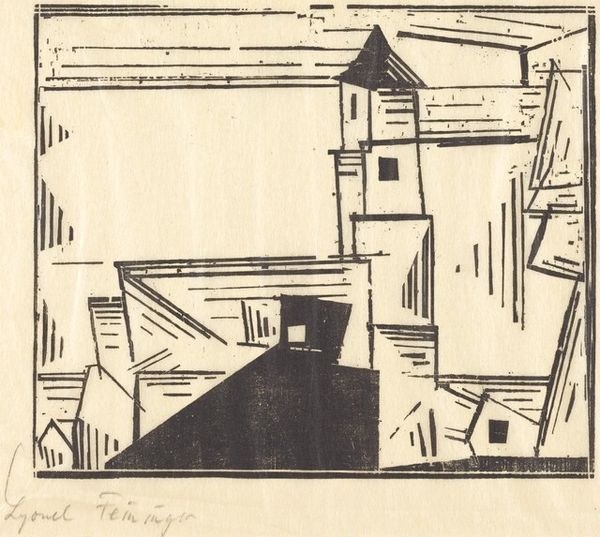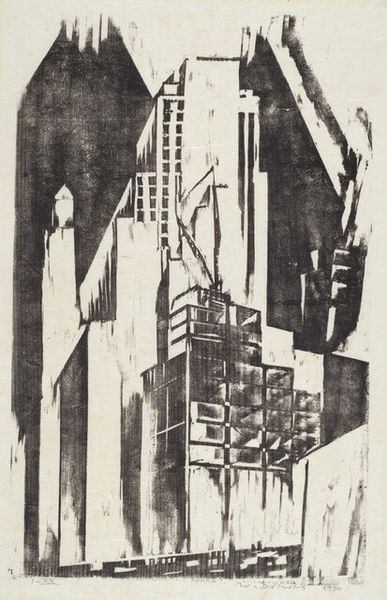
print, etching, graphite
#
precisionism
# print
#
etching
#
landscape
#
form
#
geometric
#
line
#
graphite
#
cityscape
#
modernism
Dimensions: plate: 25.88 × 24.77 cm (10 3/16 × 9 3/4 in.) sheet: 47.63 × 30.32 cm (18 3/4 × 11 15/16 in.)
Copyright: National Gallery of Art: CC0 1.0
Curator: Here we have Max Pollak's etching, "New York, Downtown," created in 1929. It’s a striking example of Precisionism capturing the energy of urban development. Editor: Immediately, I feel a sense of disquiet. The severe lines and towering structures almost seem to be pressing down, conveying both the awe and potential alienation of city life. Curator: Pollak, as an artist deeply influenced by the early 20th century's rapid industrial expansion, often explored how society grappled with these dramatic transformations. He saw beauty and dynamism in the increasingly geometric and vertical landscapes of modern cities. Editor: Absolutely. You see it here in how Pollak positions these buildings. Look at the stark lines of the architecture set against what appears to be open construction—there's such a raw contrast between development and what gets left behind, right? The composition feels almost aggressively vertical, as if even the sky is being boxed in by progress. Curator: Precisely. His technique is crucial here; etching allowed for detailed linework that emphasizes the clean, almost sterile forms favored by the Precisionist movement. There’s a clinical, yet undeniably evocative feel to it. Editor: Which then opens up questions about who benefits and who is further disenfranchised by such progress. Downtown for whom, exactly? It encourages us to contemplate who this relentless 'march of progress' really serves. It reflects on who is represented in these scenes and who gets left out. Curator: I agree. And thinking of Pollak’s later life as a refugee from Nazi persecution only deepens this dialogue around the promise and failures of modernity, particularly through the lens of those displaced by power. Editor: I’ll certainly leave with a more critical understanding of the relationship between modernist art, urban development, and the narratives they perpetuate. Thank you for guiding me to reconsider my first assumptions. Curator: And for me, a renewed understanding of the necessity to reflect on what those seemingly sterile lines conceal about the cost of so-called progress.
Comments
No comments
Be the first to comment and join the conversation on the ultimate creative platform.
